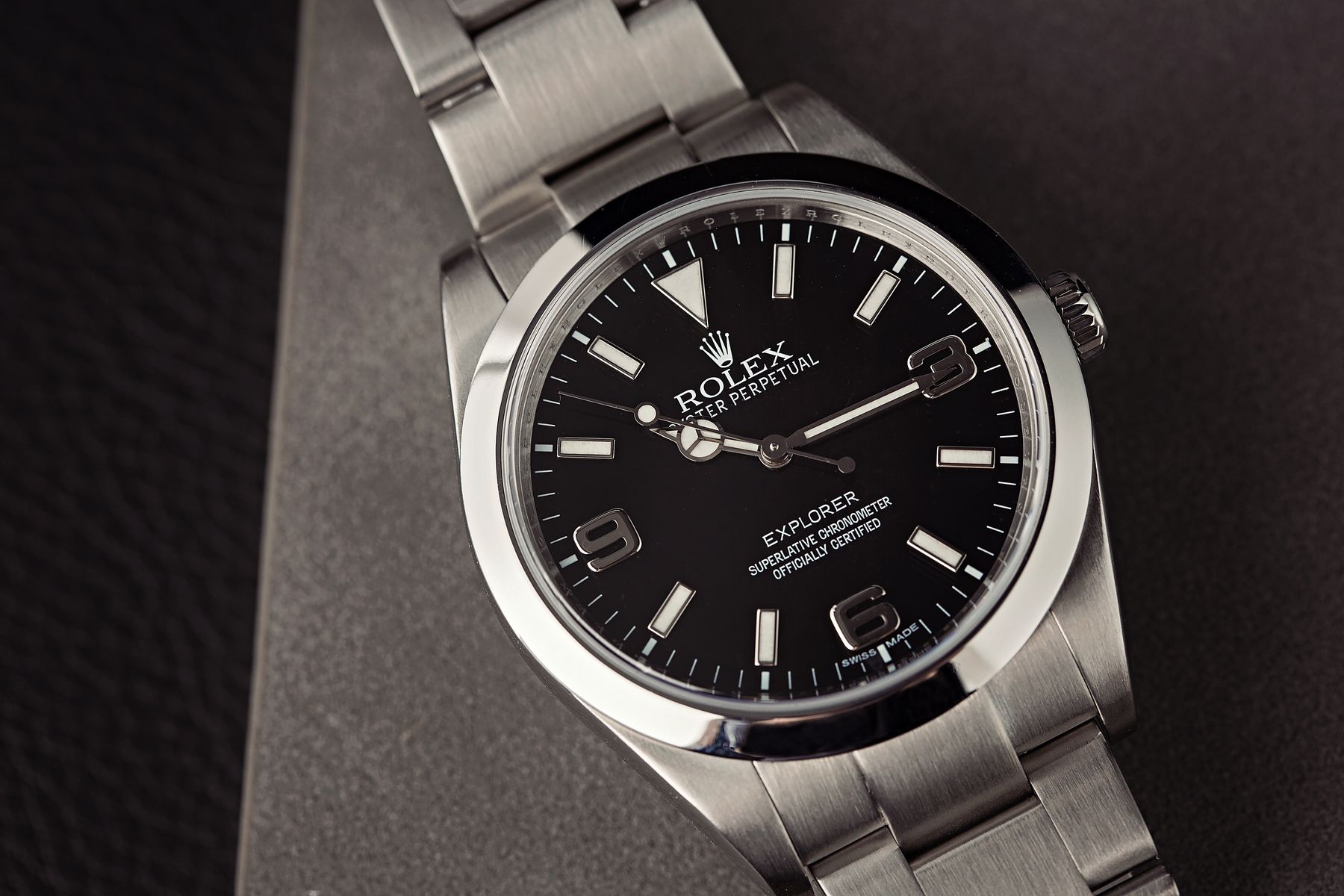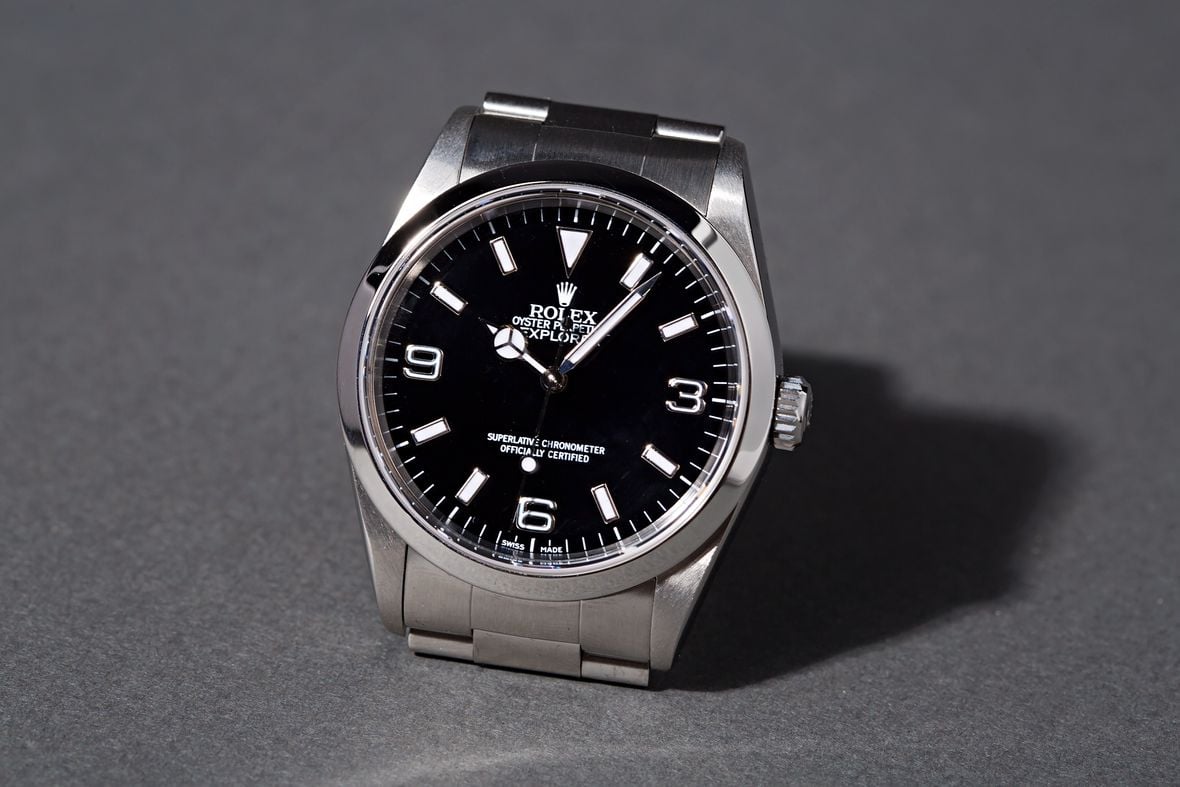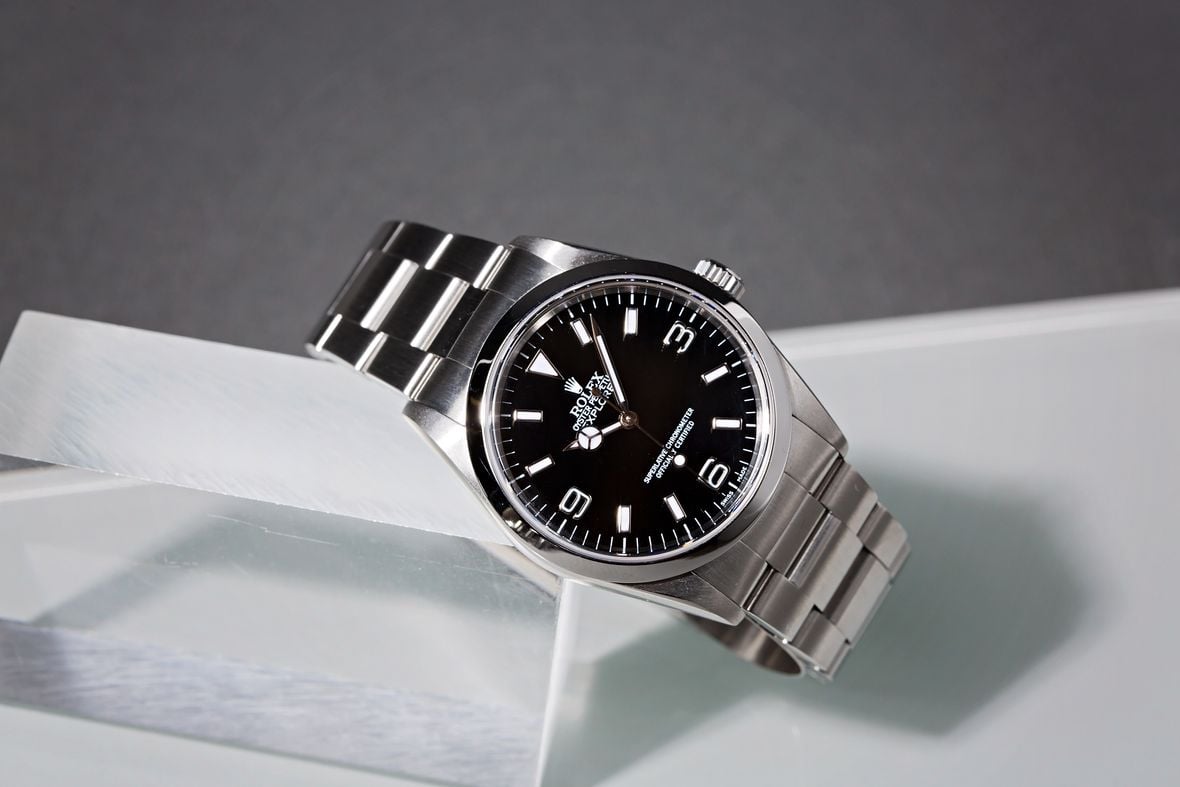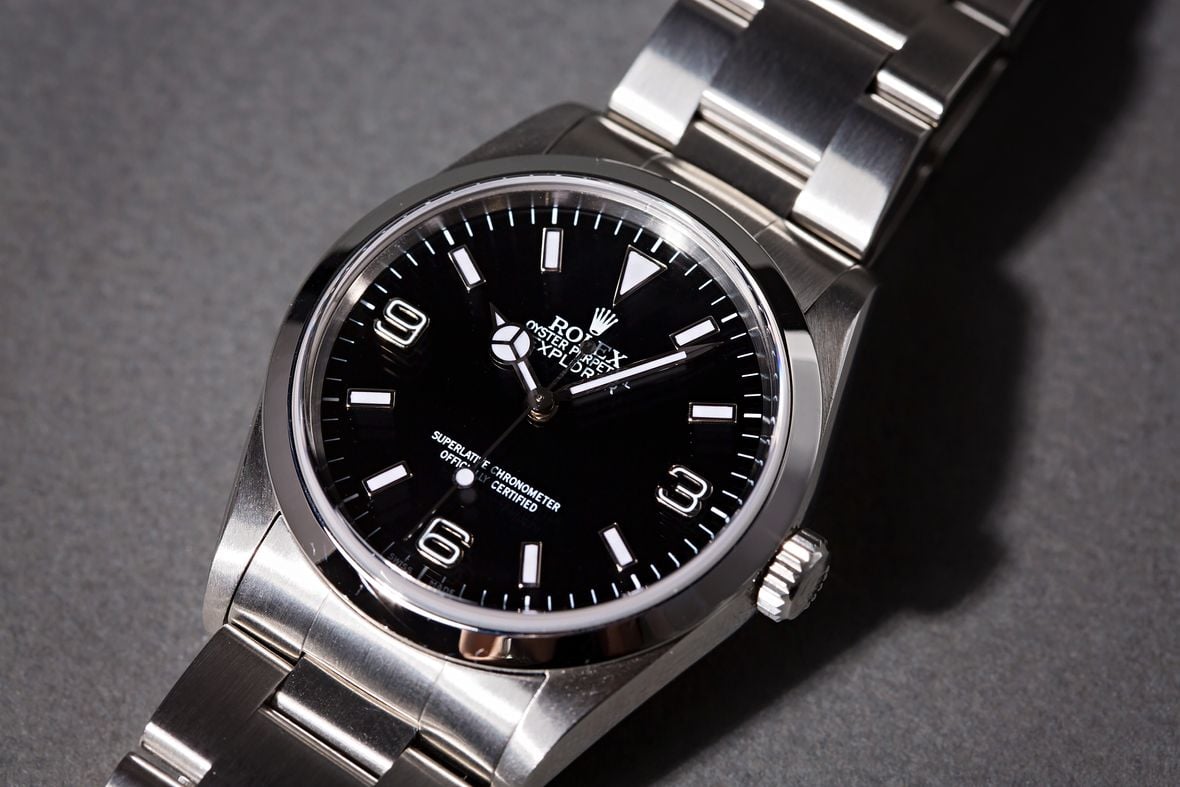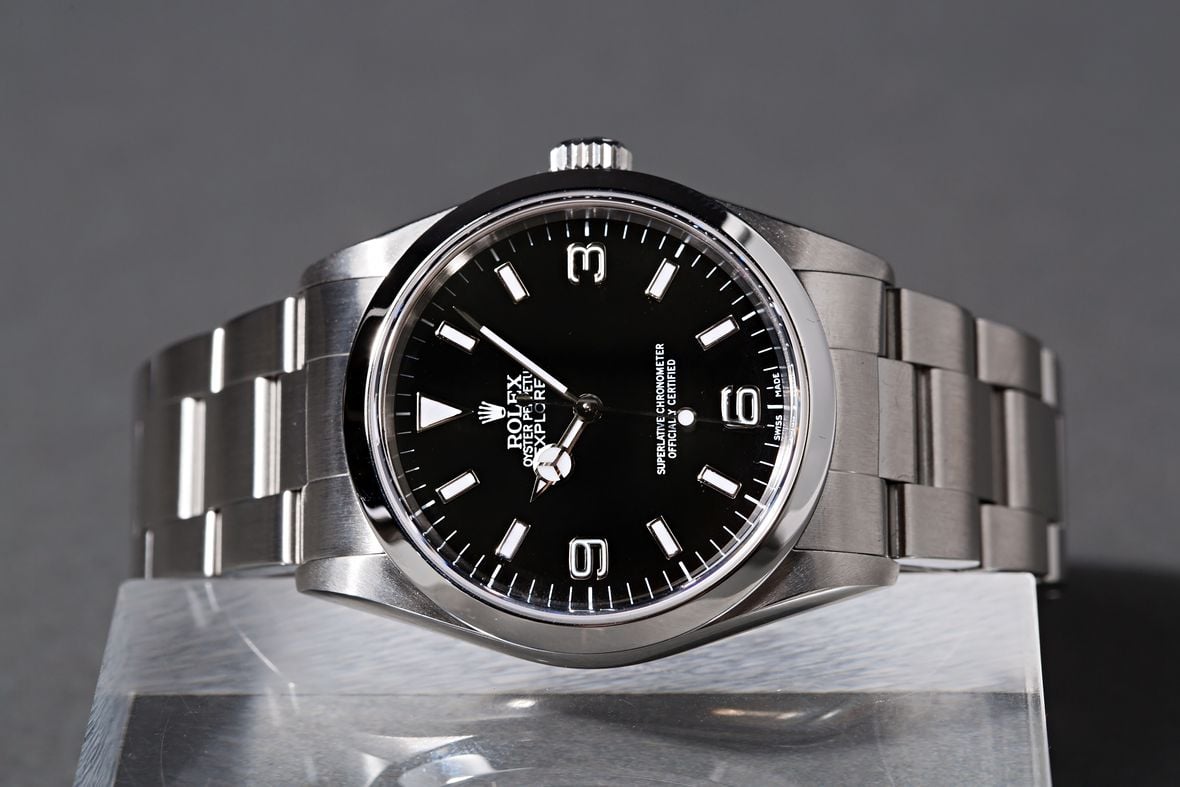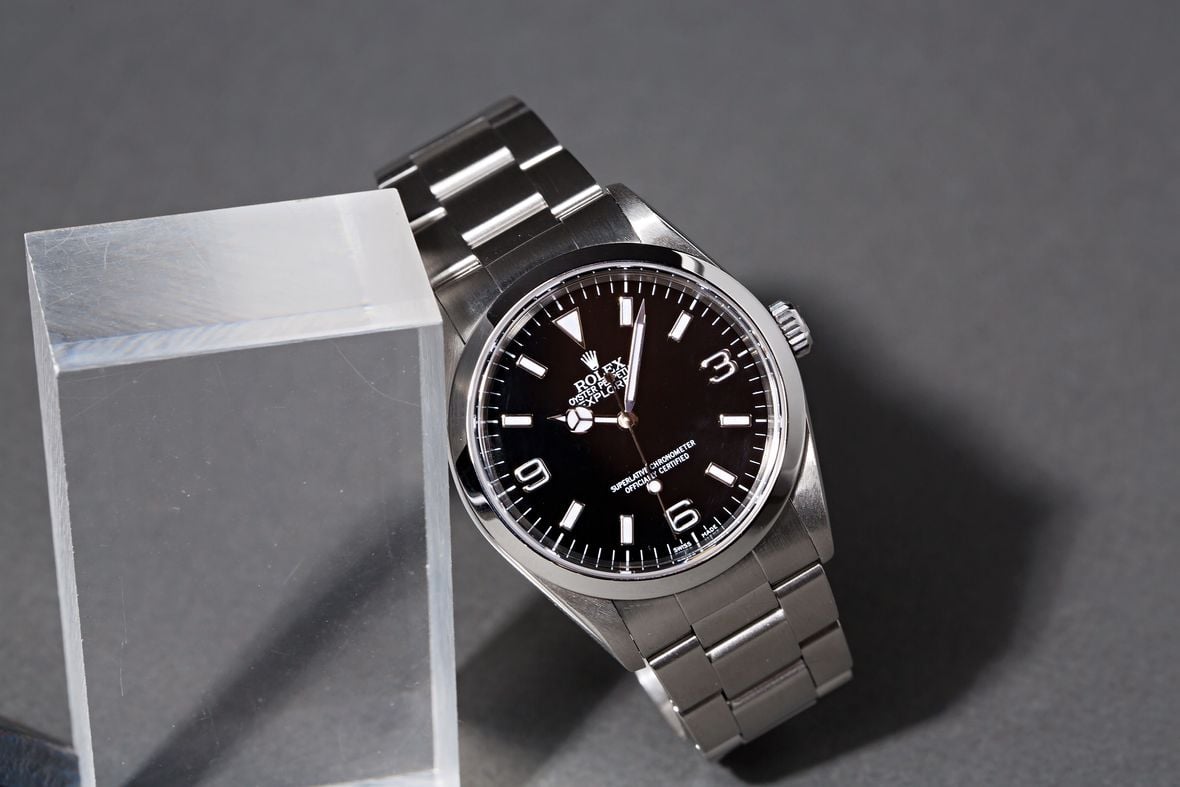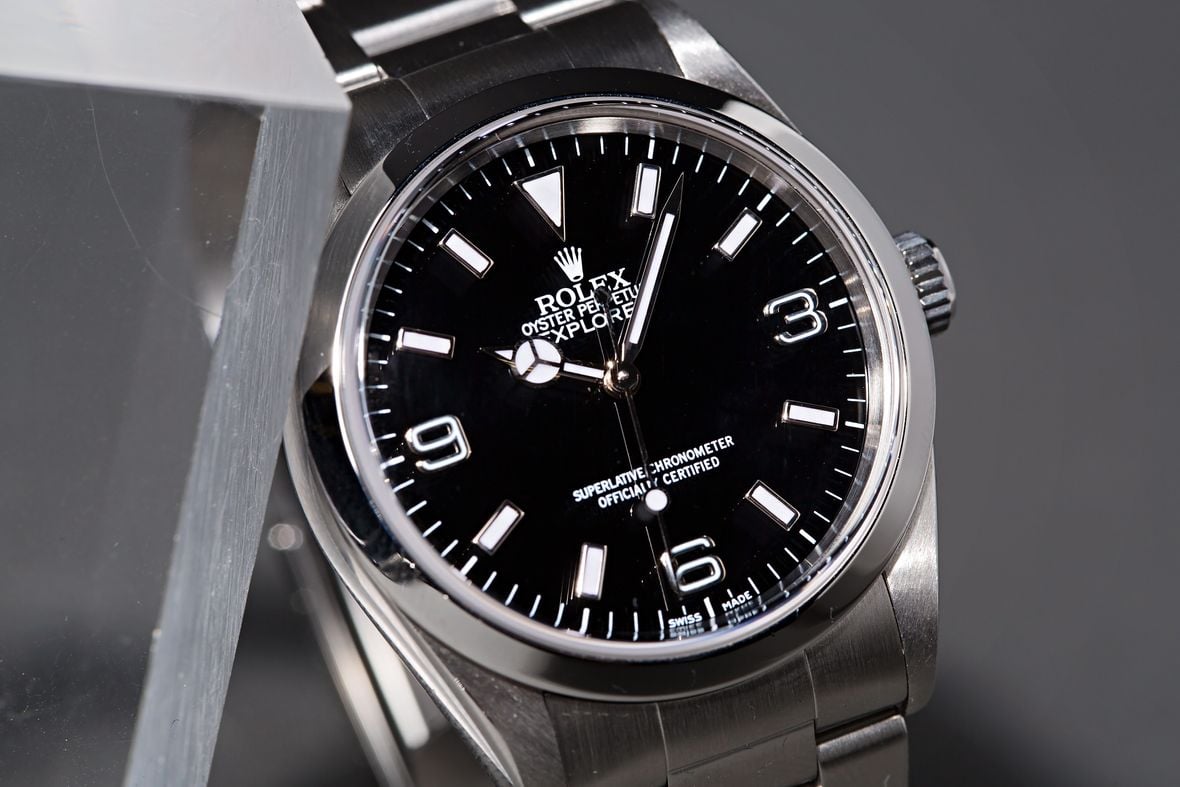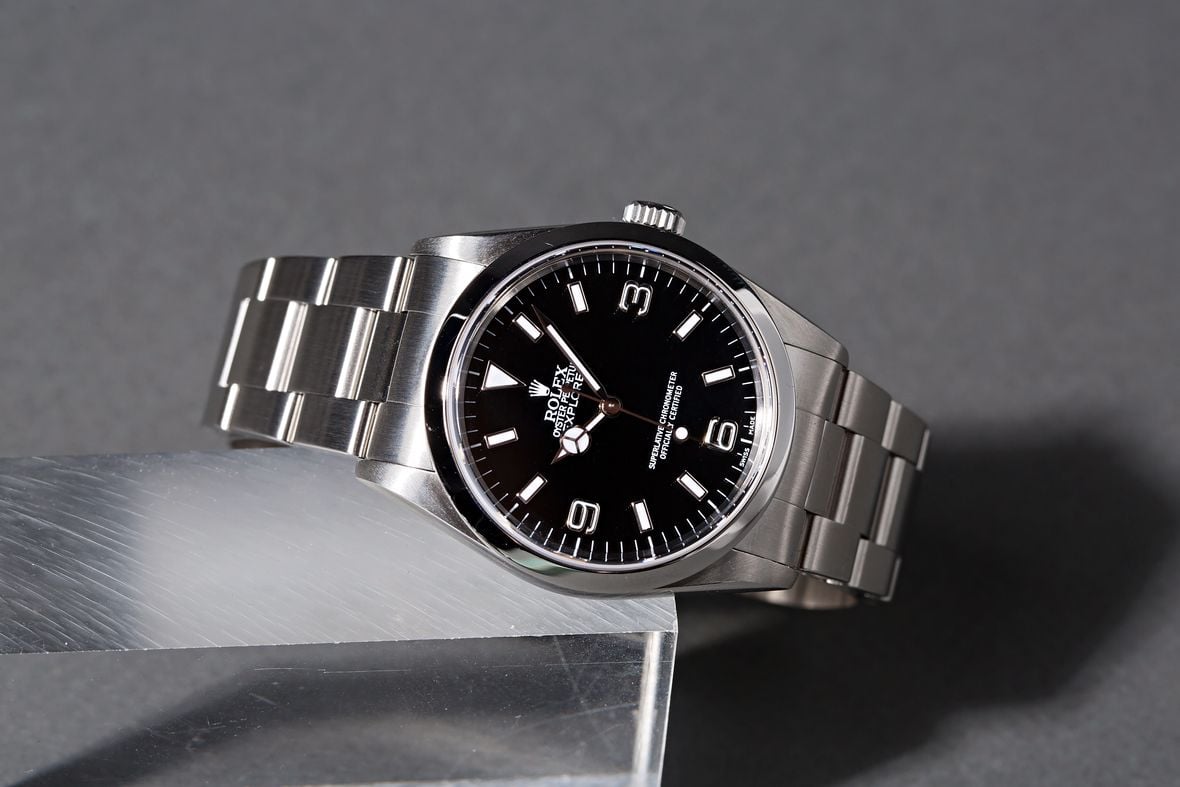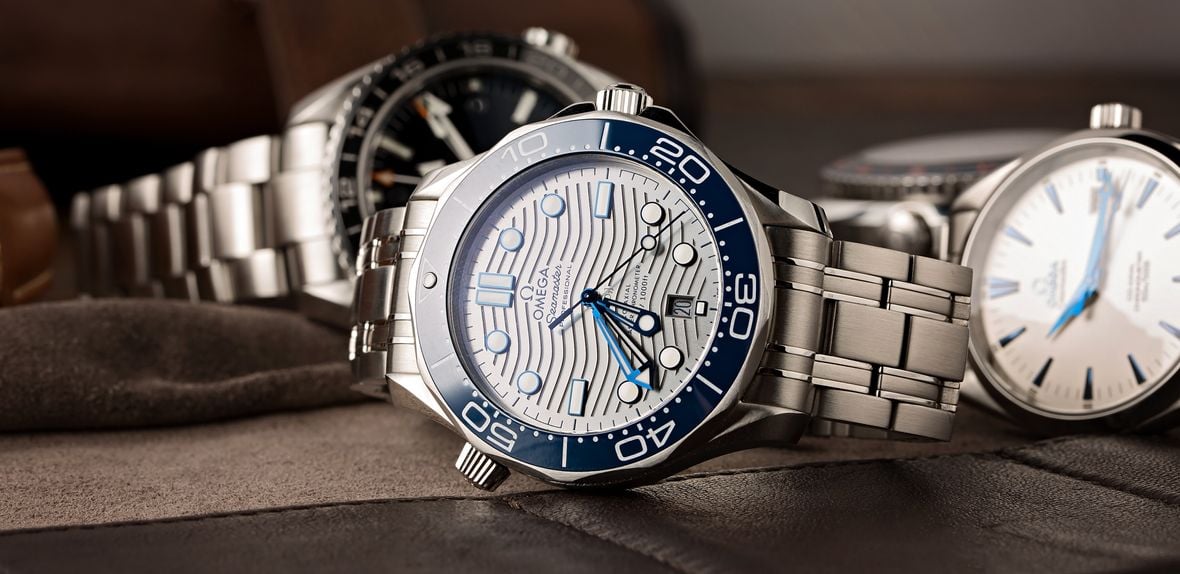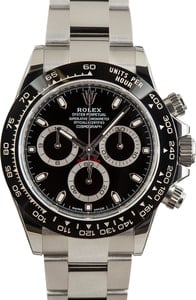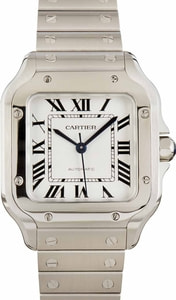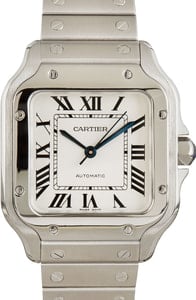The Rolex Explorer watch collection fills a unique space in the brand’s portfolio. Although it is a sports watch, the classic Explorer does not boast the usual bells and whistles seen on other tool watch giants such as the GMT-Master, Submariner, or Daytona. Noticeably absent is a rotatable bezel or any additional complications on the dial. Instead, the Explorer opts for a classic smooth bezel and time-only dial and also features a somewhat modest case size compared to most other Rolex sports watches.
The Swiss-made Rolex reference 14270 is even more interesting because it is considered by many to be the first modern Rolex Explorer watch. It enjoyed a relatively long production run from approximately 1989 until 2001, during which several variations were released to the market. Read on to learn more about the Rolex Explorer 14270 and what makes it so special.
Rolex Explorer 14270
Explorer Reference 14270 Key Details:
- Reference Number: 14270
- Production Years: 1989 – 2001
- Case Size: 36mm
- Materials: Stainless Steel
- Functions: Time w/ Running Seconds
- Dial: Black w/ Luminous Hour Markers (Applied, White Gold Surrounds)
- Luminescent Material: Tritium; Luminova; or Super-LumiNova
- Bezel: Fixed, Stainless Steel, Smooth Style
- Crystal: Sapphire (Flat)
- Movement: Rolex Caliber 3000
- Water Resistance: 100 Meters / 330 Feet
- Strap/Bracelet: Oyster Bracelet
- Approx. Price (USD): $8,500 – $35,000 (Pre-Owned)
Click here to learn more about the evolution of the Rolex Explorer.
The Rolex Explorer: A Watch Built for Adventure
The 1950s were an exciting era for Rolex and it saw the birth of many of the brand’s sports watch collections as we know them today. The Oyster case went to new depths with the Submariner in 1953, and Rolex watches picked up the ability to display multiple time zones just two years later with the appearance of the first GMT-Master.
The Rolex Explorer holds the title of being the brand’s very first sports watch and the concept behind the collection was born shortly after Tenzing Norgay and Sir Edmund Hillary reached the summit of Mount Everest in 1953. They were the first humans ever to see the giant’s peak, and during their expedition, one of the men had a Rolex Oyster watch strapped to their wrist. The watch kept perfect time, even when faced with the most extreme conditions on Earth.
Of course, the presence of a Rolex watch during such a momentous feat was not done by accident. Rather, it was organized by the company to demonstrate just how durable their Oyster case was. To celebrate the pair’s successful climb, Rolex released the Oyster Perpetual Explorer. Early examples of the mountaineer’s watch were not too unlike the Explorer as we know it today, featuring a black dial decorated with Arabic numerals at the 3, 6, and 9 o’clock positions and a 36mm case in stainless steel.
Multiple editions were released in the years that followed Norgay and Hillary’s history-making Everest climb, including references 6350, 6150, and 6610. The reference 1016 was introduced in 1963 and became one of the most iconic vintage Explorer models of all time.
The Explorer 1016 is a cult-favorite among horology enthusiasts because it also happened to be the watch of choice among such celebrities as James Bond creator Ian Fleming. Additionally, it boasted a production run that spanned nearly thirty years before it was finally discontinued at the end of the 1980s. That brings us to the next variation of the Explorer and topic of our article, the Explorer ref. 14270.
Explorer Reference 14270
Just as it had done when it came to market in the 1950s, the Explorer was once again participating in a horological revolution of sorts. When the reference 14270 was introduced, other Rolex staples were also going through a transition to include modernized materials.
This included the replacement of matte dials with glossy dials topped with white gold-trimmed hour markers. The acrylic crystal that had been a staple for so many years was also replaced with tougher synthetic sapphire during this era. Additionally, many of the models within the Rolex catalog also received improved movements.
During its production run, the Rolex Explorer ref. 14270 featured four different dials:
- 1989 – 1991: ‘Blackout’ dial with black enamel Arabic numerals and Tritium lume.
- 1991 – 1998: ‘T-Swiss’ dial with Tritium lume.
- 1998 – 1999: ‘Swiss Only’ dial with Luminova lume.
- 1999 – 2001: ‘Swiss Made’ dial with Super-LumiNova lume.
Other distinguishing features of the Rolex Explorer 14270 include a stainless steel 36mm Oyster case with a water-resistance rating of up to 100 meters/330 feet, a COSC chronometer-certified cal. 3000 movement, and an Oyster bracelet with hollow end links and a stamped clasp. Although Rolex now produced a two-tone version of the Explorer, the case and bracelet of the ref. 14270 were exclusively crafted from durable stainless steel.
Rolex 14270 Movement: Caliber 3000
The Rolex Explorer reference 14270 received the in-house manufactured Caliber 3000 movement, replacing the long-running cal. 1570 that powered its predecessor, the reference 1016. The Rolex Caliber 3000 is a 27-jewel, chronometer-rated automatic movement that operates at a frequency of 28,800 beats per hour and represents the point in the Explorer’s history when it first gained a high-beat movement and started to transition into the modern era.
With a COSC-certified accuracy rating of +4/-6 seconds per day, the Rolex Caliber 3000 was rather precise for a mechanical movement produced during this era, which can at last partly be attributed to its updated higher operating frequency. The current, state-of-the-art movement that Rolex uses to power the modern Explorer watch beats at the same frequency, and although it does offer slightly more stringent timekeeping standards and a longer power reserve, its core functionality is near-identical to the Cal. 3000 that is found inside the reference 14270.
This self-winding, time-only movement was just one of many impressive upgrades made to the 5-digit Explorer watch during its modern evolution. Although the Explorer 14270’s updated dial design and sapphire crystal are typically the two features that receive the most attention from collectors, the updated Caliber 3000 inside the reference 14270 is arguably an equally significant upgrade over its predecessor.
The “Blackout” Explorer 14270
Rolex enthusiasts have never failed to notice even the slightest tweaks made to models, whether it be a new font used on a bezel or micro-millimeter adjustments to the layout of the text on the dial. No detail is too small to escape their passion or their loupes and macro lenses. More specifically, the very first iterations of the Explorer 14270 piqued the interest of Rolex collectors because of the unique design of the Arabic numerals on the dial. The first batches left the Rolex factory with their 3/6/9 Arabic numerals filled with black enamel instead of the usual white material seen on most subsequent references.
The vast majority of ref. 14270 Explorer watches with the black enamel-filled 3/6/9 hour markers all seem to have serial numbers starting with the letter prefix “E” or “X” (corresponding to production years 1990 and 1991, respectively). Also, the earliest dials appear to have printing stamped in silver. At some point around 1991, Rolex changed the fill of the white gold Arabic numerals to white and this means that a very limited production run of Rolex 14270 watches have dials with black-filled Arabic numerals.
A New Rolex Explorer Nickname
Of course, the astute members of the Rolex collecting community noticed the aesthetic difference in early Explorer dials compared to dials manufactured and installed post-1991. As is usually the case with Rolex watches that have unique characteristics, collectors soon assigned the watch a memorable nickname. Because these early Explorers are distinguished by the black enamel in their “3, 6, 9” applied numerals, this version became known as the “Blackout” Explorer.
Throughout its production run, The Explorer 14270 picked up a total of 4 monikers, each signifying a design difference on the dial. Of course, the first examples produced in the early 1990s went by the “Blackout” nickname. Next came the nicknames “T-Swiss,” “Swiss Only,” and “Swiss Made,” each signifying a change in lume from Tritium to Luminova and then to Super-LumiNova. Now, modern Rolex watches are seldom considered “rare,” but the Blackout Explorer variant is the exception to the rule and is often considered to be one of the rarest Rolex watches with a sapphire crystal.
How to Buy The Rolex Explorer 14270
As the reference 14270 was discontinued long ago, the only avenue to purchase this 5-digit Explorer is on the pre-owned market. Blackout dials trade hands for as much as $30k, while later editions of ref. 14270 that are fitted with white-filled Arabic numerals typically resell for just under the five-figure mark.
If you’re in the market for an entry-level Rolex sports watch with great investment potential, later editions of the ref. 14270 are some of the very best options available. They have all the modern amenities that many collectors seek with the added appeal of being right on the edge of being a vintage Rolex watch. If you have the budget to spend, the Blackout Explorer is an even greater investment that we expect will only continue to gain value in the long term.
In today’s watch-collecting environment, it’s a badge of honor to own a watch with a distinctive attribute, and the dial of the “Blackout” Explorer certainly qualifies it as a one-of-a-kind Rolex. However, any version of the Rolex Explorer dial represents one of the most distinctive and recognizable designs in horology. While the classic time-only Explorer is among Rolex’s least-expensive sports models, its historical significance as the brand’s very first purpose-built sports watch makes it a cult-favorite among many collectors and prices for the discontinued reference 14270 keep going up each year.
Classic, timeless, and more than tough enough to last at least several lifetimes, the Rolex Explorer 14270 makes the perfect addition to any serious luxury watch collection, yet it could also just as easily be the only watch that a person will ever need.
Learn more about the full collection by reading our Rolex Explorer ultimate guide here.
